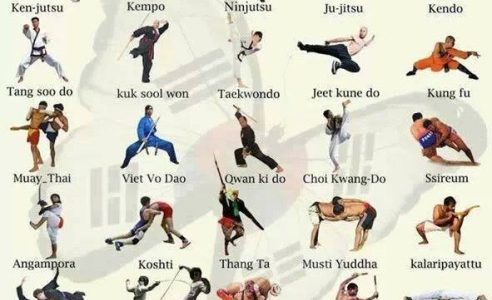Exploring The Differences In Between Typical Martial Arts And Contemporary Fight Sports
Exploring The Differences In Between Typical Martial Arts And Contemporary Fight Sports
Blog Article
Team Writer-Valentine Finnegan
When you think of martial arts, do you lean much more toward the conventional techniques or the contemporary combat sports? Each course supplies special benefits and experiences, shaped by their philosophies and training approaches. Traditional martial arts stress personal growth and self-control, while contemporary combat sports concentrate on competitors and performance. Comprehending linked internet page can guide you in picking the best method for your journey. Yet just how do these distinctions show up in training and philosophy?
The Ideology and History Behind Typical Martial arts
While many individuals link martial arts with physical combat, the philosophy and history behind typical martial arts run much deeper. You'll find that these disciplines stress personal growth, technique, and respect.
Stemming from ancient practices, standard martial arts were typically established for Self-Defense and spiritual development. They embody concepts such as equilibrium, consistency, and self-discipline, guiding professionals past mere combating abilities.
As you train, you'll not only learn techniques but likewise gain insights into the society and values that shaped these arts. The routines and customs, usually passed down through generations, foster a feeling of area and belonging.
The Competitive Nature of Modern Combat Sports
Modern fight sporting activities have actually transformed the landscape of martial arts right into a highly competitive arena, where professional athletes challenge in an examination of ability, technique, and endurance.
You'll notice that competitors are usually organized with strict guidelines and laws, making certain fair play and safety. These events attract big audiences, fueling the exhilaration and strength of matches.
Professional athletes train rigorously, not just for physical expertise however additionally for psychological strength, understanding that every information counts in the ring. The adrenaline thrill during competitors is palpable, as fighters push their limitations to declare success.
Followers value the athleticism and virtuosity involved, making modern-day combat sports a thrilling spectacle that remains to advance and astound lovers all over the world.
Training Methods and Methods: A Relative Evaluation
The competitive environment of modern combat sporting activities needs cutting-edge training techniques that differ substantially from conventional martial arts.
In contemporary training, you'll concentrate on certain techniques, competing, and conditioning, commonly using drills that mimic actual battle scenarios. You'll see a focus on quantifiable efficiency and constant competition to assess your skills.
On the other hand, traditional martial arts prioritize forms, katas, and thoughtful trainings, frequently emphasizing discipline and regard over competitors.
Training is typically less intense and might entail recurring practice as opposed to real-time sparring.
While both strategies construct ability and physical fitness, modern-day fight sporting activities supply a much more dynamic and versatile training setting, preparing you for prompt obstacles in the ring or cage.
Choose the path that lines up with your goals and passions.
Conclusion
In choosing in between typical martial arts and modern battle sports, it really boils down to what you value most. If you're trying to find personal growth, self-control, and a feeling of community, typical arts could be your finest fit. Yet if you grow on competitors and real-time obstacles, modern-day combat sporting activities could be the way to go. Inevitably, both courses use one-of-a-kind benefits, so it's everything about straightening your training with your individual objectives and interests.
